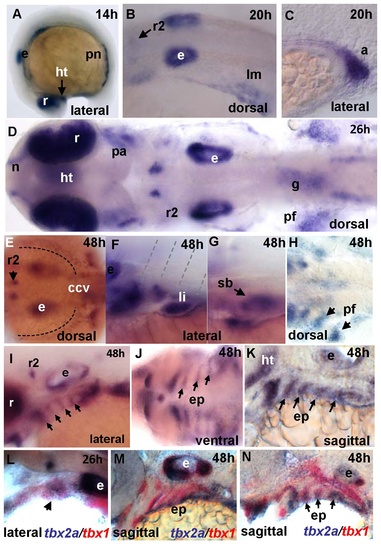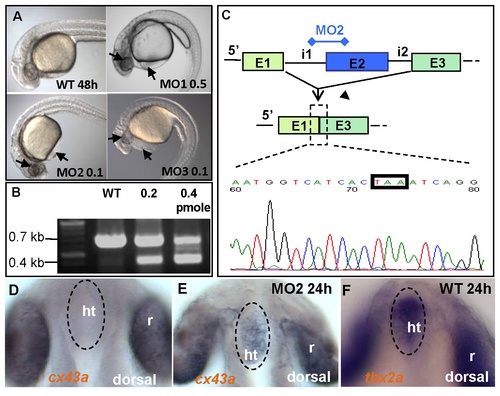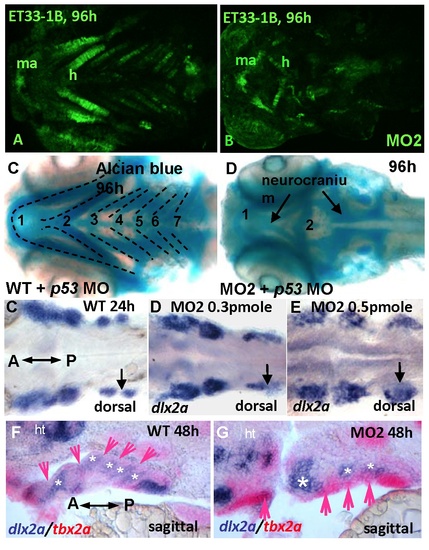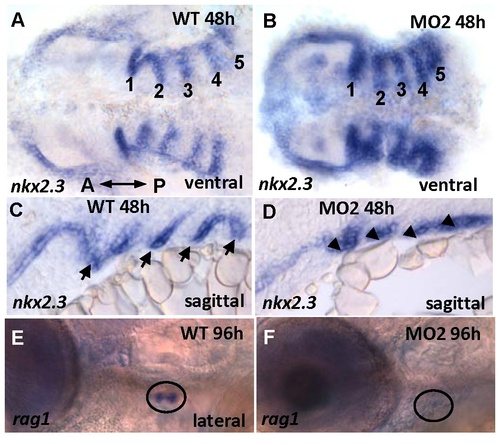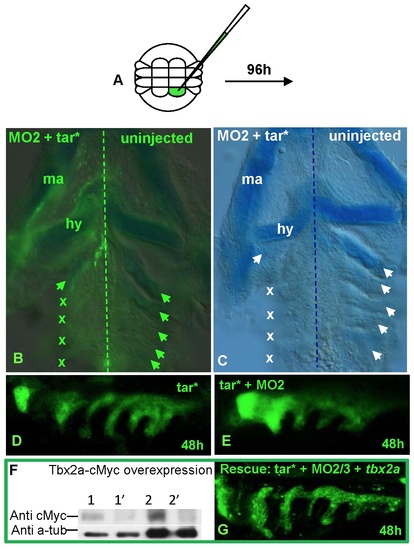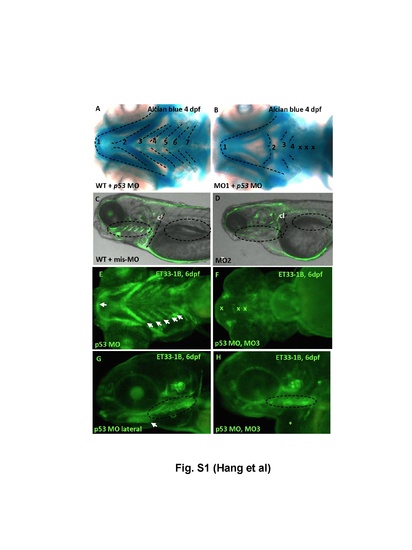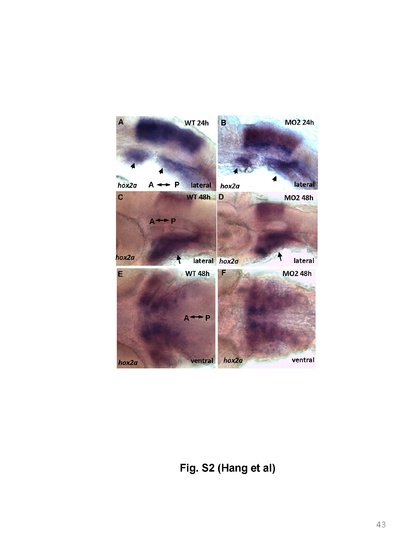- Title
-
tbx2a Is Required for Specification of Endodermal Pouches during Development of the Pharyngeal Arches
- Authors
- Thi Thu, H.N., Haw Tien, S.F., Loh, S.L., Bok Yan, J.S., and Korzh, V.
- Source
- Full text @ PLoS One
|
Expression pattern of tbx2a during development as detected by whole-mount in situ hybridization (WISH) (14-48 hpf). (A) Lateral view of 14 hpf embryo. Lateral-dorsal view of 20 hpf embryo (B) hindbrain and (C) lateral view of the anus. (D) Composite image showing a dorsal view of 26 hpf embryo. (E-K) 48 hpf embryo. (E) Dorsal view of the hindbrain. (F) Lateral view at the level of somite 2. (G) Lateral view of the swim bladder. (H) Dorsal view of the pectoral fins. (I-K) Pharyngeal arches in a (I) ventral view and in (J-K) sagittal sections. Two-color WISH for (K) dlx2 (magenta) and tbx2a (red), (L-N) tbx2a (magenta) and tbx1 (red). Abbreviations for all figures: a: anus; pa: pharyngeal arches; ccv: common cardinal vein; e: ear; ep: endodermal pouch; g: gut; r: retina; r2: rhombomere 2; ht: hypothalamus; h: hours post-fertilization; li: liver; lm: lateral mesoderm; n: nasal pits; ncc: neural crest cells; pf: pectoral fin; pn: pronephric ducts; sb: swim bladder; v: vagal nucleus. EXPRESSION / LABELING:
|
|
Morpholino activity. (A) 48 hpf live MO1/MO2/MO3-injected embryos (doses of 0.5 pmole/0.1 pmole/0.1 pmole, respectively) exhibit hydrocephalus, heart edema (arrow), body curvature, and reductions to the ears and eyes (arrow). (B) Amplified mature transcripts of MO2 morphants on a 0.8% agarose gel. Only one mature transcript is present in the WT, with reduction of the transcript detected in morphants injected with MO2. An additional small transcript was detected caused by the binding of MO2 to the acceptor site of intron 1 and excision of a fragment containing intron 1, exon 2 and intron 2. (C) Mature transcript results from joining of exon 1 and exon 3 and a frame shift-induced stop codon (TAA-black box) at the beginning of exon 3. cx43a expression is normally absent in the ventral diencephalon of control embryos (D), but is ectopically activated in the tbx2a morphants, (E) in the domain of tbx2a expression, and (F) in the ventral diencephalon. |
|
Knock-down of tbx2a affects pharyngeal arches. (A, B) tbx2a knock-down results in a loss of GFP-positive pharyngeal arches visualized on a background of ET33-1B transgenics. Alcian Blue-stained cartilages are present in the pharyngeal arches of tp53 morphant (C), but not in the tbx2a/tp53 morphants (D). At 24 hpf, dlx2a-positive streams of migratory NCCs (C) develop normally in the morphant (D) even after injection of a high dose of MO (E). At 48hpf, the patterning of posterior arches is affected (arrows and asterisks in F, G). |
|
nkx2.3 expression. nkx2.3 is expressed in the segmented endodermal pouches in control (A, C) and morphant embryos. These segmented endodermal pouches are almost fused in the morphants (B, D). The rag1-positive thymus, a derivative of the endodermal pouch (E) is absent in the morphant (F). A: anterior, P: posterior. |
|
Endodermal pouch-specific knock-down of tbx2a causes an anomaly of the pharyngeal arches rescued by tbx2a mRNA. (A) Taram-A* (tar*) mRNA injected into the marginal blastomere at the 16-cell stage gives rise to mesendoderm, from which the endodermal pouches derive. (B) Co-injection with MO2 affects the posterior pharyngeal arches (crosses). (C) Alcian Blue staining viewed under bright field microscope. Confocal imaging of the endodermal pouches upon co-injection with fluorescent dye and tar* mRNA in the (D) control and (E) the morphants co-injected with MO2. These morphants exhibit shortened and thickened endodermal pouches. (F) Western blot of total lysates from c-myc-tagged tbx2a mRNA-injected embryos (lane 1, 20 μg; lane 2, 100 μg) and non-injected embryos (lane 1′, 20 μg; lane 2′, 100 μg). (G) Rescued MO2-injected morphants with tbx2a mRNA show elongated endodermal pouches. |
|
Tbx2a KD by other two MO. Alcian Blue staining of (A, B) MO1 morphant; (C) mis-MO2 control; (D) MO2; and (E-H) MO3 morphants. |
|
Knock-down of tbx2a does not affect early hindbrain patterning. (A-D) hoxa2 expressed in rhombomeres 2 to 5 and streams of neural crest cells (NCCs) (arrows) in both WT and morphants. (E, F) hox2a-positive NCCs arrive at the pharyngeal region. |

